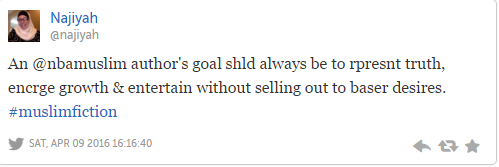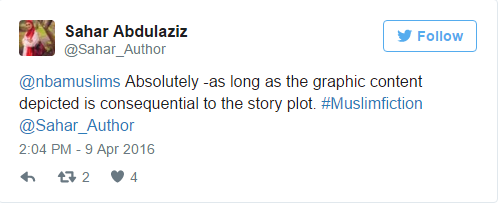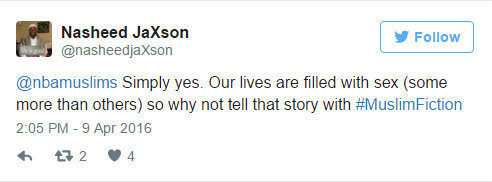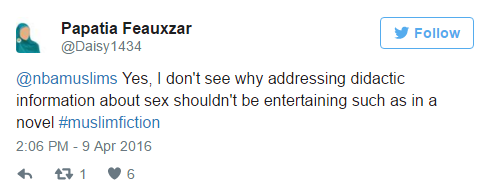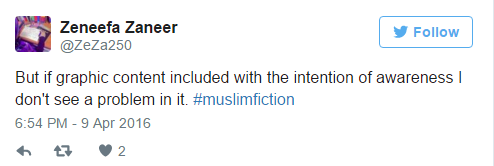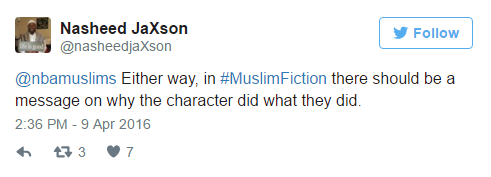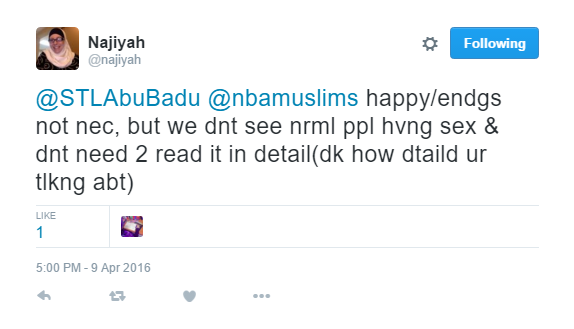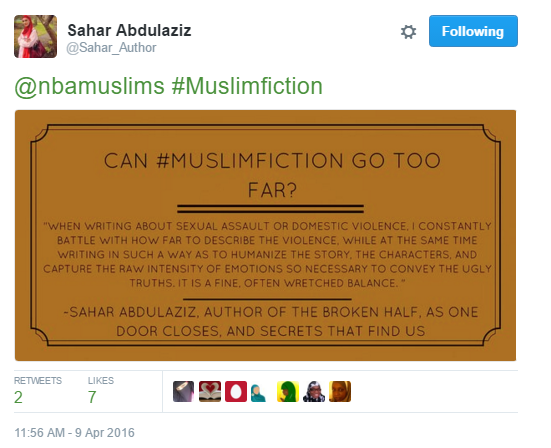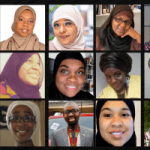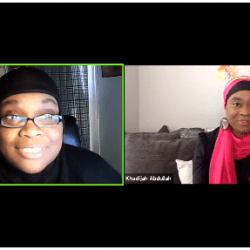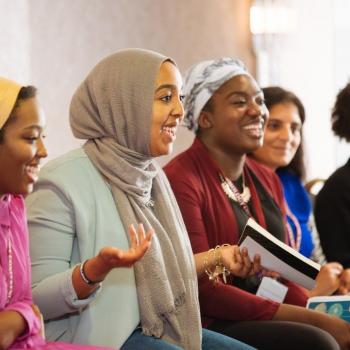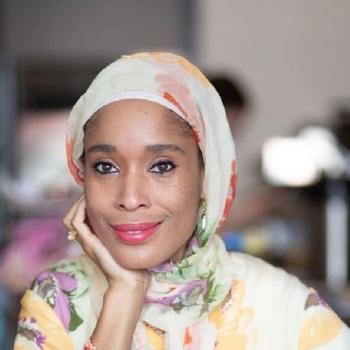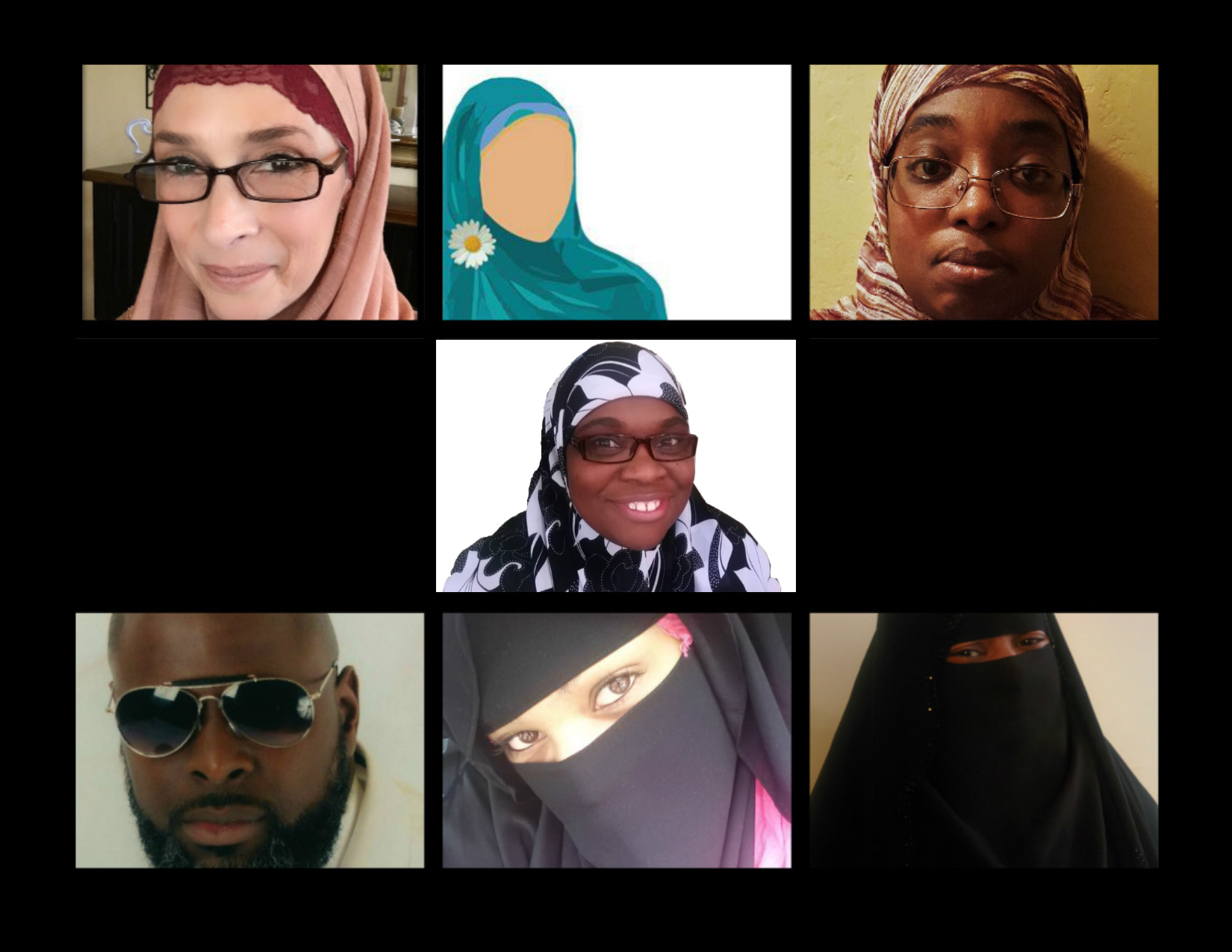 NbA Muslim recently hosted its second Twitter chat, Exploring Sex and Violence – Can Muslim Fiction go too Far? Guest authors Sahar Abdulaziz, Papatia Feauxzar, Karimah Grayson, Nasheed Jaxson, Jihada, and Elle Muslimah joined writers and readers from around the world to respond to the following questions:
NbA Muslim recently hosted its second Twitter chat, Exploring Sex and Violence – Can Muslim Fiction go too Far? Guest authors Sahar Abdulaziz, Papatia Feauxzar, Karimah Grayson, Nasheed Jaxson, Jihada, and Elle Muslimah joined writers and readers from around the world to respond to the following questions:
#1: Is there a place for graphic/sexual content in a novel written by a Muslim author?
#2: How does a Muslim author decide what is necessary content and what is gratuitous/pornographic?
#3: Is there a difference between exposing issues of sex and violence and sensationalizing them? Is it a Muslim author’s responsibility to determine it?
#4: Can graphic/sexual content be so pivotal to a character/plot that the story cannot be told without it?
The objective of the chat was to provide a space for those who write and read Muslim fiction to interact and share their perspectives about the inclusion of graphic and explicit content in novels written by Muslim authors. The responses were diverse and represented a spectrum of opinions.
When asked if graphic/sexual content had a place in works written by Muslims, authors and readers submitted a range of responses. Some participants resisted against Muslim authors including such content:
Others left room for the inclusion of graphic/explicit content – within appropriate context:
When asked how they determined the amount of graphic/explicit content (if any) they integrate into their works of fiction and how they refrain from glorifying dysfunctional and unlawful behavior, authors readily shared their perspectives:
Interestingly, numerous tweets focused on sex as opposed to other graphic/explicit content such as violence. Some participants were emphatic about mentioning the inappropriateness of sexual/sensual scenes in Muslim-authored fiction:
Ultimately, there was not a large amount of protests about the inclusion of graphic violence (e.g. assault, murder, catastrophe, etc.) in Muslim fiction.
When asked about the significance of graphic/explicit content to telling their stories, many authors asserted the necessity for some inclusion of such content (to which some readers may take exception) to convey the messages in their writings. Authors also shared how they struggle with deciding how much graphic/explicit content to utilize:
The diverse responses in the Twitter chat demonstrate the soul-searching that many Muslim authors engage in to write their stories and convey their messages. The tweets also serve as examples for the need to further explore the relative nature of what is construed as objectionable and what may be a matter of preference.
Note: Tweets were rearranged for context purposes.
To read more highlight tweets, check out NbA Muslims Twitter Chat #2 -Exploring Sex and Violence: Can Muslim Fiction Go Too Far? on Storify.
Search #Muslimfiction on Twitter to read all the #Muslimfiction Twitter chat tweets and responses.
The views expressed in the Tweets contained in this article are the authors’ and do not necessarily reflect those of NbA Muslims.


